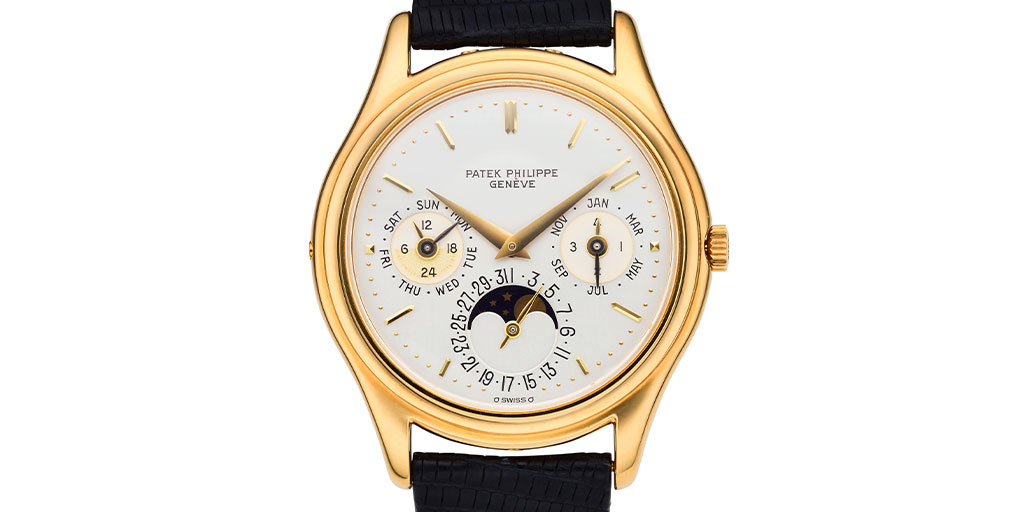At Collectability, we take great pride in our scholarship of all things Patek Philippe and nothing gives us more pleasure than to learn the views and insights from others in the watch community. In this in-depth study of the iconic ref. 3940, our Italian friend Federico Muggia, @fedoclock, dives deep into the world of the reference 3940 and shares his views of the differences within the series. This article is the work and opinion of Federico Muggia and we very much respect the time and scholarship that he put into this article.
The alluring charm of the caliber 240 long ago grabbed a hold of my imagination and led me inevitably into the wonderful world of the ref. 3940. I could only surrender. Thus, began a personal journey through the available literature. I wanted both to learn and to contribute.
The following article is a response to what I know to be true. There are many of you who want to deepen your knowledge and delight in both the small details and the main features of the Patek Philippe ref. 3940.
This research is based on thoroughly verified sources. No research is ever exhaustive. The door is always open to discoveries which make themselves known in unexpected ways. Those who want to make further contributions are welcome as long as these are the result of serious research and whose provenance is reliable.
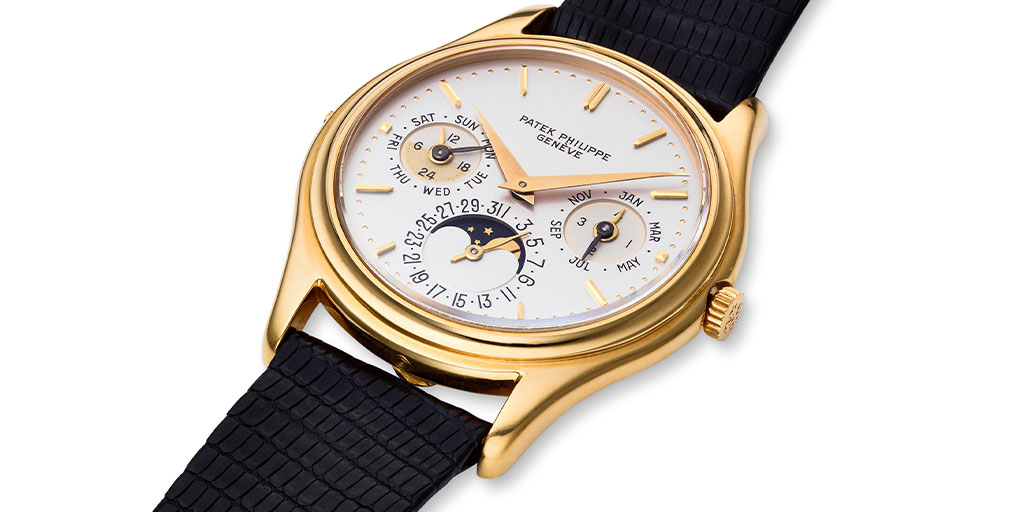
It was 1985. The Swiss watch industry was in full crisis. The quartz revolution was running rampant through the mechanical watch industry. This was a potential death blow to the beating heart of the Swiss economy. The belief that the mechanical watch was becoming obsolete ran through the manufactures, with the consequence that the investment into complicated or innovative mechanical timepieces virtually stopped. This was the world in which the ref. 3940 and ref. 3970 were simultaneously born: inauspicious births indeed. The ref. 3940 was historical because it was both highly complicated and in terms of Patek Philippe production ‘mass-produced’ as part of the main collection. There was something perplexing about the timing of its introduction in the midst of the quartz revolution, but the timing turned out to be perfect. The aesthetic content of the quartz movement, hidden by its microscopic dimensions, was no match for the easily discernible and visual aesthetics of superior mechanical movements. The market was again discovering the value of mechanical watches. The ref. 3940 represents a milestone in how far the Geneva manufacture has come. It is no coincidence that Philippe Stern, while having the privilege to wear any Patek Philippe watch, selected the ref. 3940 as the watch he would wear every day.
THE FIRST 25 PIECES FOR BEYER (1985)
The release of the ref. 3940 is also associated with the celebrated Beyer Chronometrie, Switzerland’s oldest watch retailer (since 1760) with headquarters in Zurich. Philippe Stern released the ref. 3940 to coincide with the 225th anniversary of the eponymous retailer and show support for his close friend Theodore Breyer. The first 25 models of the ref. 3940 were made with customized and numbered dials for Beyer. Numbers 1 to 15 have a German dial, while numbers 16 to 25 have an English dial. They were delivered to Beyer in May 1985. Appropriately, the first model with 770.001 movement and German N ° 1 dial was given to Theodore Beyer.

The second piece with movement number 770.002 and German N ° 2 dial sold to an important collector, Eugen Gschwind, on 9 July 1985. Today it is kept in the Patek Museum in Geneva. Nothing is known about the third with movement number 770.003 and N ° 3 dial and the subject of Beyer Chronometrie advertising as seen below.
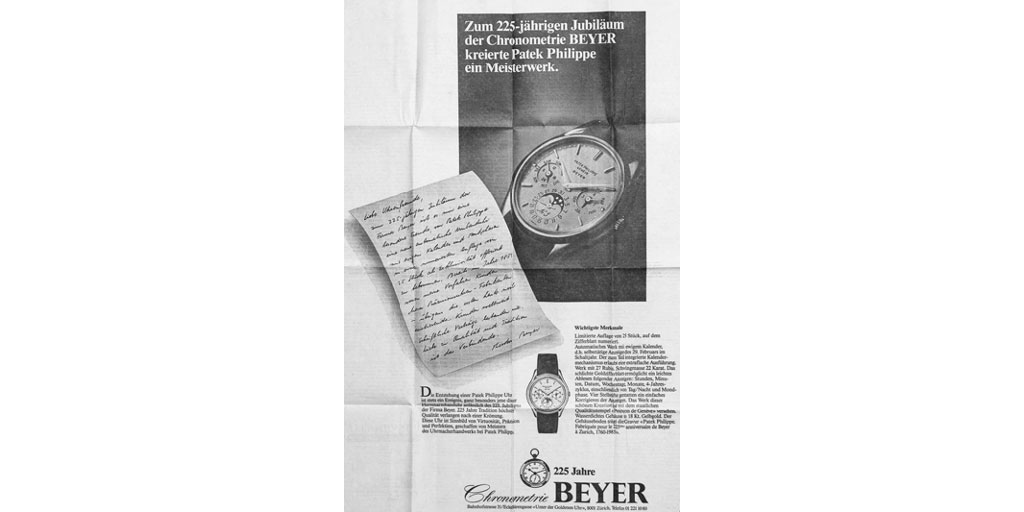
I thought it was proper to apply a classification to the production of the ref. 3940. Four distinct series can be identified. The first series was produced from 1985 to 1987/88, the second from 1988 to 1989/90, the third from 1989/90 to 1995/96 and the fourth from 1995/96 to 2007.
DIALS
The dials or quadrants for the ref. 3940 were produced by Fabrique de Cadrans Stern Frères, better known today as Stern Creations. Charles and Jean Stern were dial manufacturers in the early 1900s and were considered one of the best dial manufacturers, so much so that Fabrique de Cadrans Stern Fréres was the exclusive supplier to Patek Philippe. During the Great Depression, knowing the prestige and legacy of the Geneva manufacture, the Stern brothers bought Patek Philippe in 1932. The rest, as they say, is history.
FIRST SERIES DIALS (1985 – 1987/88)
The first series dials were much more difficult to produce than the beveled versions produced later, which could explain the reduced production numbers and consequent rarity of this series. In the first series dials, the day and month indicators are located on the surface of the main dial, while the day/night and leap years are located within the grooves as can be seen below.
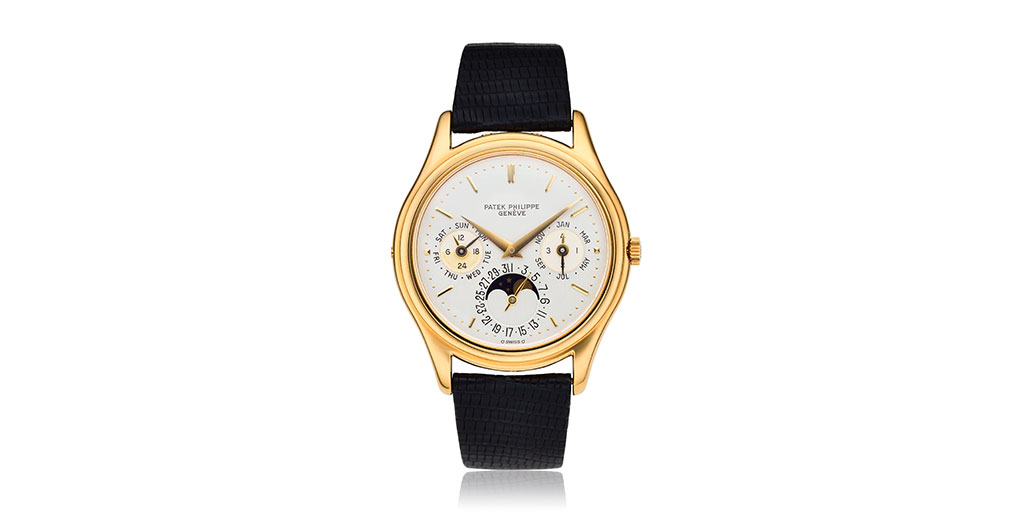
Close examination of the first series dials reveals that the revered words “PATEK PHILIPPE” are found with more or less accentuated graces. Another relevant aspect is the word “GENEVE.” All the dials of the first series have the grave accent above the second “E” of “GENÈVE” which we will see disappear starting from the second series.
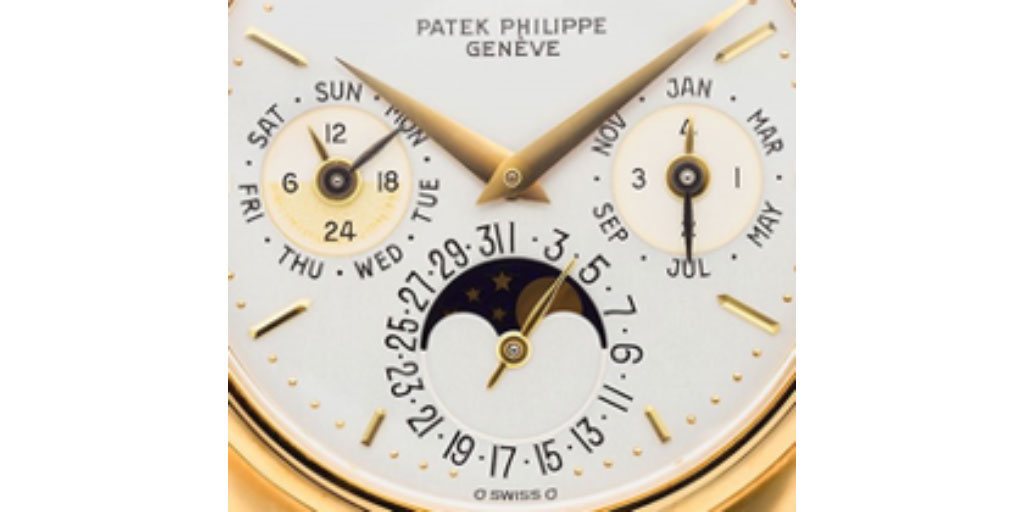
Above is an original ref. 3940 first series dial. Below is a factory reprinted first series dial. Note the larger font and the absence of the accent on Geneve.

A comparison of the photos of the original dial with that of the reprinted dial above, immediately reveal important differences. Both the grave accent on the second “E” of “GENEVE” and the graces on the fonts are absent or very coarse. The font of the calendar numbers is obviously different. The “7” being particularly different. Furthermore, if we carefully look at the signature “PATEK PHILIPPE” and the writing “GENEVE” it is clear that the latter takes on different proportions. In the original, the “G” in GENEVE begins below the middle of the “E” of “PATEK” and the last “E” of ends matches the second “I” of “PHILIPPE”.
Below on the left is the original dial, and on the right is the reprinted dial.
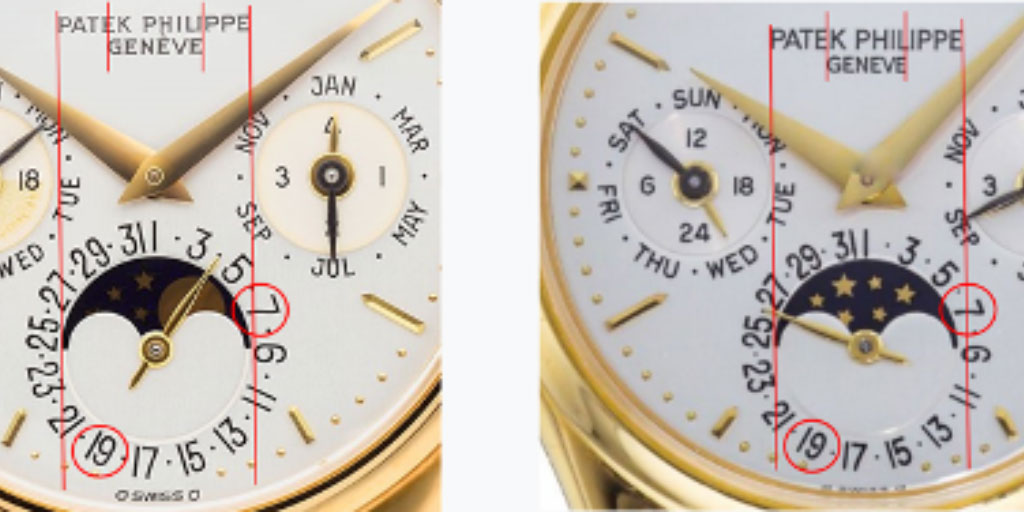
Until now it is known that the first series with a yellow gold case was supplied with a white opaline dial or with a gold dial. These are referred to in the Certificate of Origin or in the Extract from the Archives as argentè and dorè respectively. The white gold and platinum version was offered only with the white opaline dial.
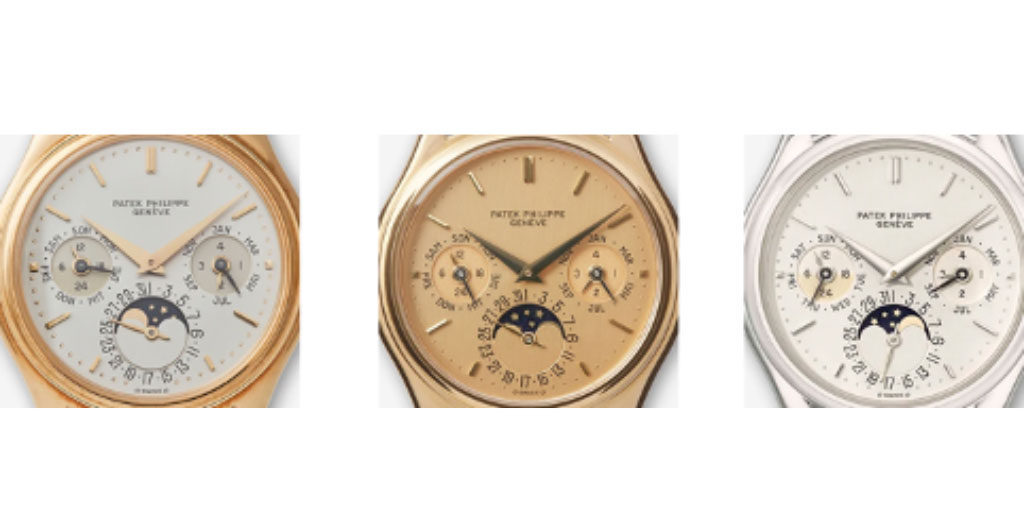
The gold dial is by far the most unusual. It may also be seen with the dealer’s signature on the dial, making it particularly rare. Below is an example of the custom dial for Beyer N ° 6 (one of 15 produced).
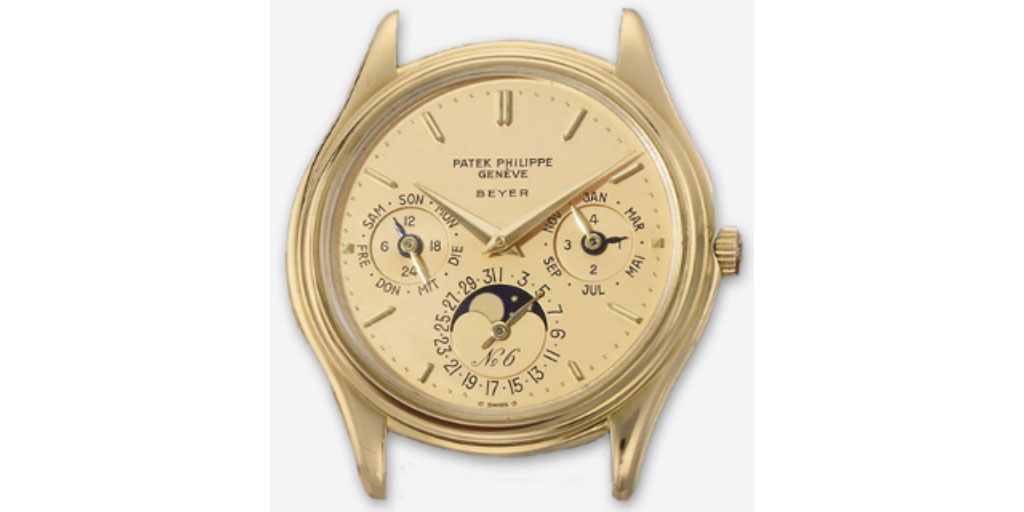
The large numbers expected for this reference necessitated a gradual yielding of the use of traditional techniques used on the dials to more contemporary ones. Especially in the first and second series, one finds in the ref. 3940 techniques used on previous references which involved much smaller numbers. We can cite as examples the hand-applied indexes and in some cases the hand-finished dial openings. Gradually, more modern techniques were used to accommodate the larger scale of production. For example, the moon phase is made from sapphire crystal, which takes much less time or labor to produce than an enamel disc. These trends continue as the ref. 3940 progresses.
SECOND SERIES DIALS (1987/88 – 1989/90)
The second series, like the first, is believed to have been produced for a period of about two years. The main difference between the first series is the use of beveling in the day and month indicators at three and nine o’clock. It gives an illusion of depth and the appearance of a sub-dial upon which the months of the year and the days of the week are indicated. This creates the effect of larger counters and a fuller dial. Below is a first series on the left and a second series on the right.

Below, the Patek Philippe signature and the writing “GENEVE” are slightly higher than the previous series and the font has changed and is no longer graced.
Below, the grave accent on the second “E” in “GENEVE” also disappears. The letters are less detached and the proportions between “PATEK PHILIPPE” and “GENEVE” are different.
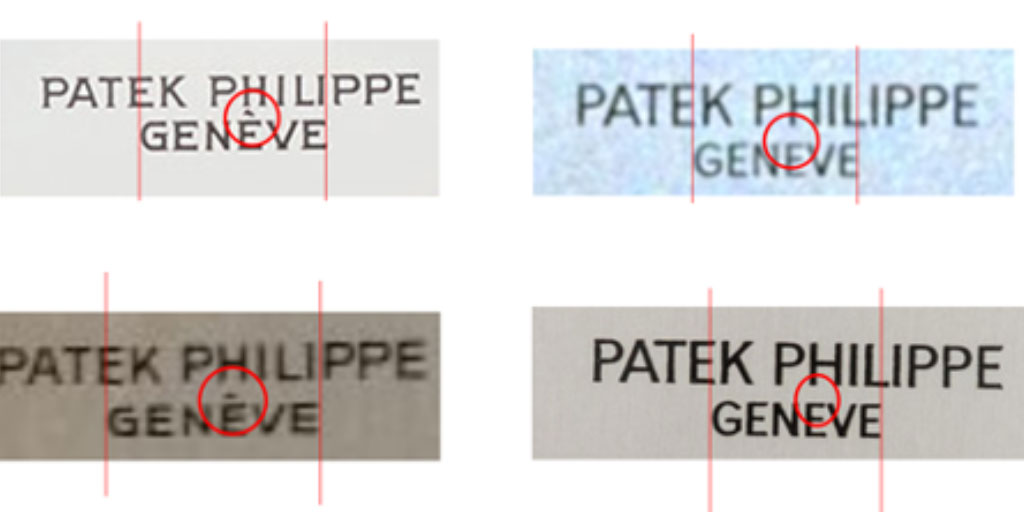
While the signature font changes, the sub-dial font remains very similar if not identical to the first series. The characters are graceful as shown below.
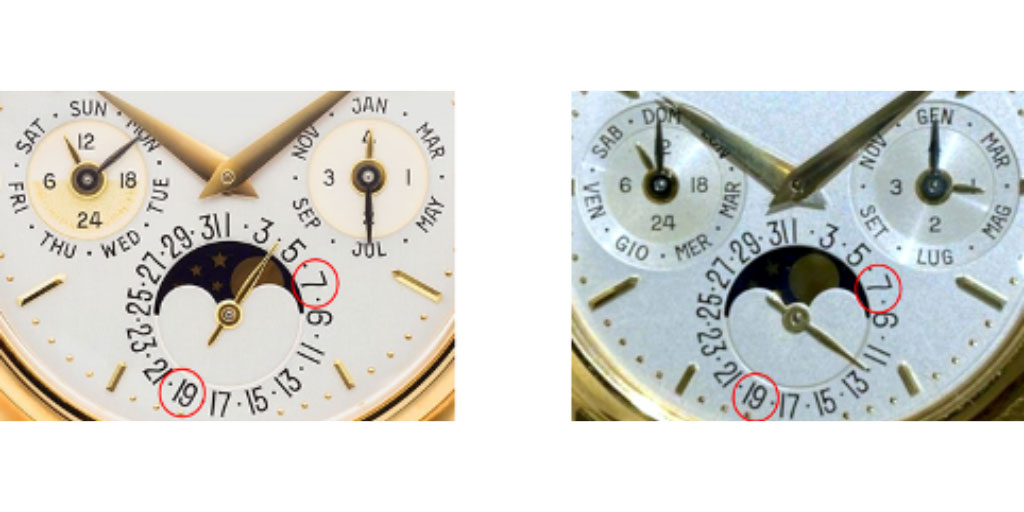 THIRD SERIES DIALS (1989/90 – 1995/96)
THIRD SERIES DIALS (1989/90 – 1995/96)
The most obvious difference introduced in the third series dial which remained until the end of production of the ref. 3940, is a cross divider on the leap year indicator. Below on the left is a second series dial in white gold, on the right a third series dial in platinum.
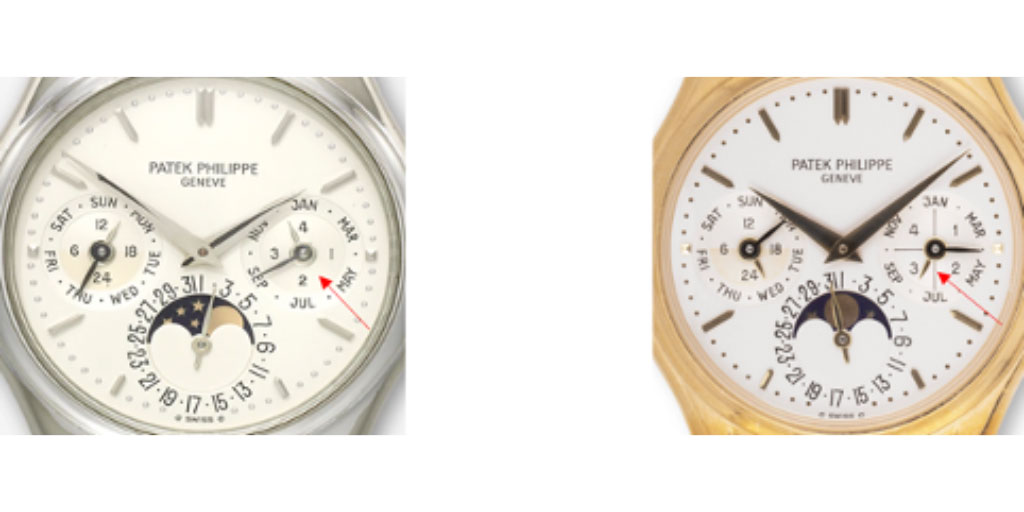
FOURTH SERIES DIALS (1995 – 2007)
At first glance, there appear to be few changes in the dial when you compare the third and fourth series, but closer scrutiny reveals numerous changes. Foremost is the positioning of the “sigma Swiss sigma” at the in the 6 o’clock position on the dial. The positioning with respect to the minute hand track is different. As seen in the next image, from 1995 it is in line with the external minute track, while in previous series it was always below.

The sub dials have also been updated with a more modern font, which can be easily noticed by comparing the numbers “5” “7” “9” or the letter “J”. The graces disappear completely. The cross divider of the leap year indicator remains.
DIALS WITH ROMAN NUMERALS
Roman numerals on the dial made their appearance with third and fourth series. The dial is made in lacquered porcelain. The Roman numerals are painted as is an external minute track. Sub-counters have the largest characters. It features the cross divider in the leap year indicator. The word “swiss” simply appears unaccompanied by sigmas.
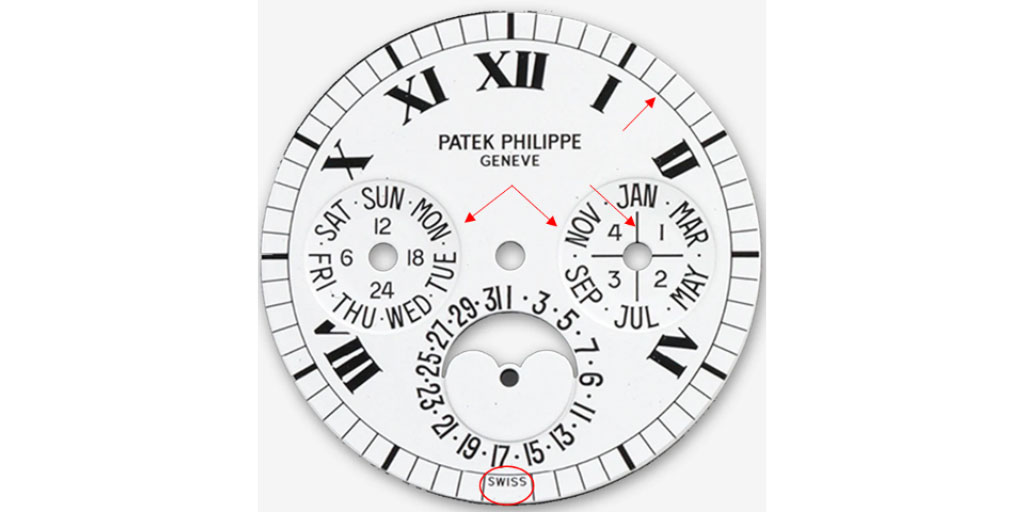
Some examples are also known to have been supplied with both the Roman dial and the traditional dial.
LANGUAGE OF THE DIALS
The first custom dials made for Beyer were available in German and English. Subsequently, even if in different quantities, dials were constantly produced in different languages. While dials in English and German remained the most popular, Italian versions were produced and even rarer ones in French. Rumors indicate that Spanish versions were produced, but there is no evidence to support them. I looked for subtle differences that might accompany dials produced in different languages. While I was only able to compare a few examples, I found some dials in Italian. It is the only one of the four to have the “6” closed in the left twenty-four hour sub-counter. It also features a “4” with a longer head (at least for the first and second series).
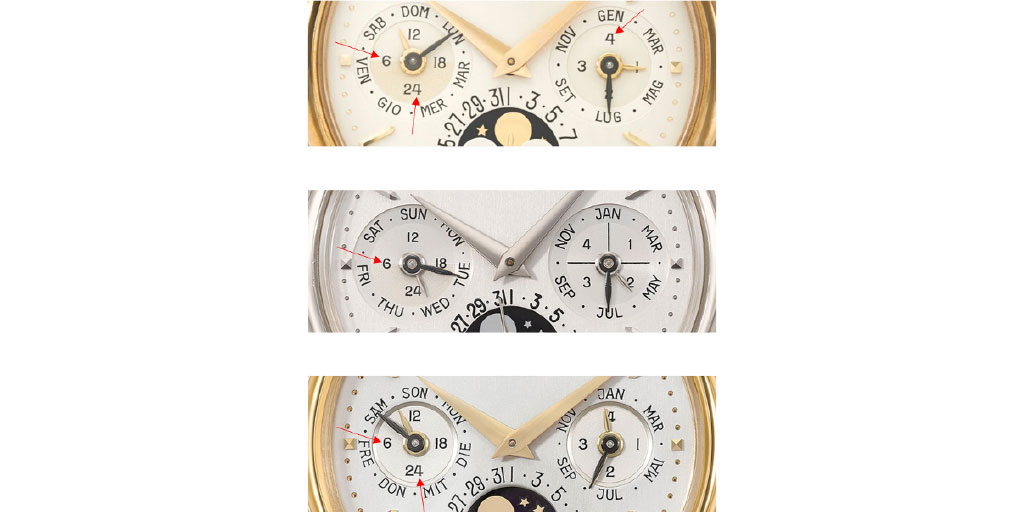
MOON PHASE
The moon phase indicator consists of a moon and stars. With some exceptions, moon and stars appear in yellow gold. Silver moon and stars appear in some white gold and platinum examples from the fourth series as seen below.

SUB-DIAL COLORING
A distinctive feature of the ref. 3940 is the two-tone coloring of the 24-hour sub-dial. This finish was applied by Patek Philippe during production. John Reardon says the two-tone coloring was intentionally applied as part of the Stern Creations dial making process. The “night” half of this sub dial was deliberately painted a darker shade than the “day” half. Over time, the darker half of the paint has aged more aggressively on some pieces, making the color appear much darker than originally intended.
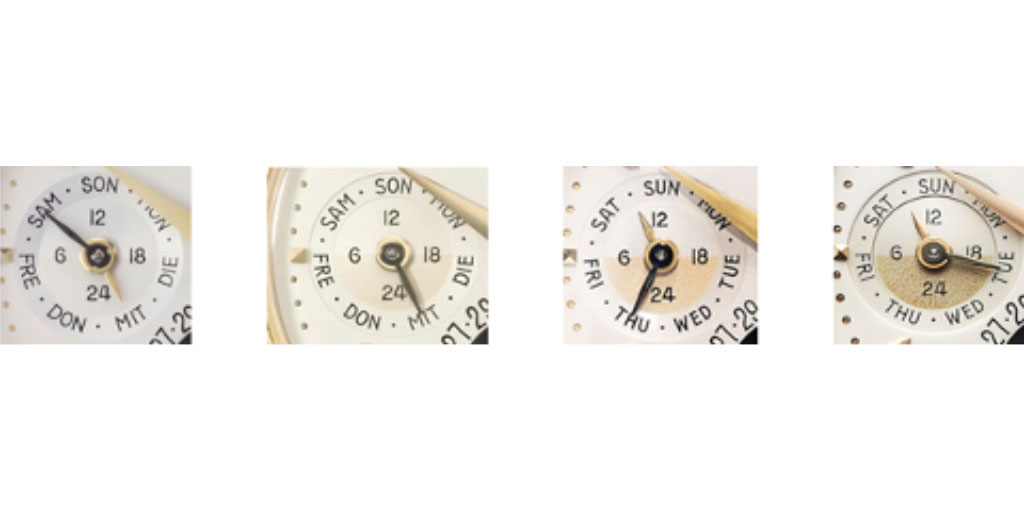
DIAL QUADRANT X
A very rare variation of which little is known is the leap year indication divided with an “X”. This model seems to be particularly rare, but there is little information available about it.
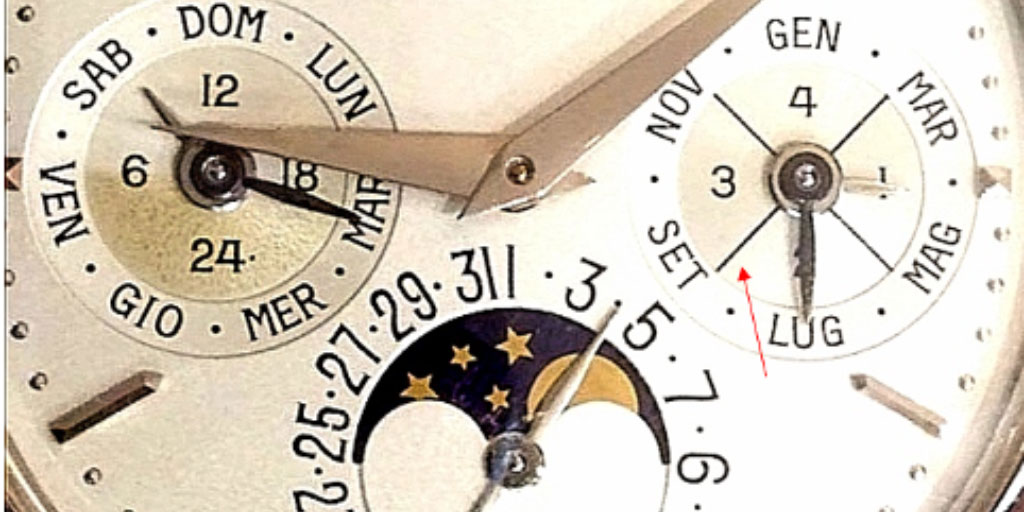
CUSTOMIZATIONS
Retailer customizations are often part of the charm of vintage collecting, especially with Patek Philippe. The ref. 3940 is not exempt from this. While we have already mentioned the limited and numbered Beyer anniversary models, there were also some regular production models that had Beyer printed dials without individual numbering. However, Beyer was not the only retailer to have his name on a ref. 3940. There are a few examples that also came onto the market such as Tiffany & Co. and Gübelin signed dials. It is hard to say how rare these are, but it is believed that they are probably fewer in number than the Beyer-signed dials.
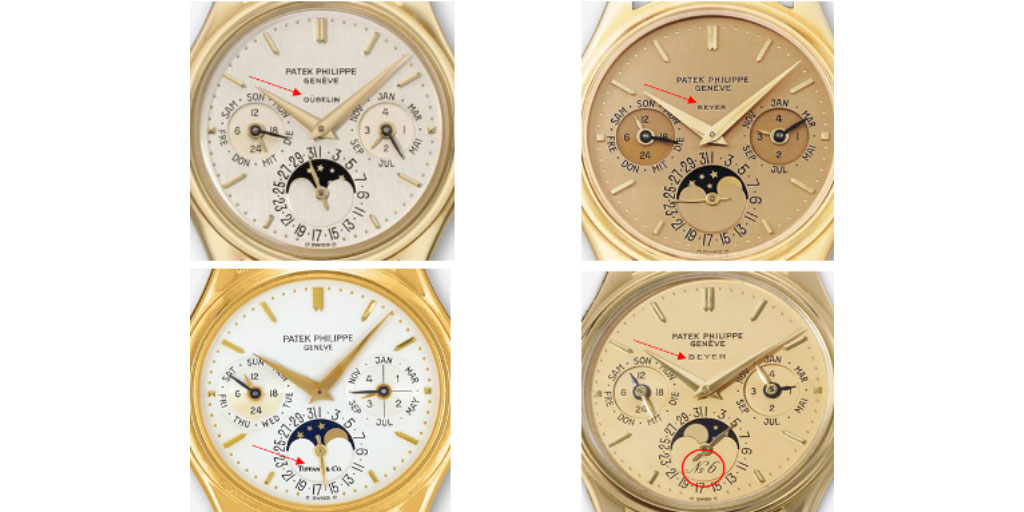
It is also interesting to note that the Tiffany & Co. signature is inside the moon phase indicator.
‘THE SAATCHI’ EDITION
To celebrate the 175th anniversary of the brand, Patek Philippe held a series of major, global exhibitions. One of the exhibitions took place at the Saatchi Gallery in London. To honor this milestone, they created a series of limited edition watches, including a ref. 3940 with dial colors that had never appeared in the collection before. As for the layout, the main difference is a larger and thicker Patek Philippe signature. Some calendar numbers such as “27” and “15” and “17” are squashed. Patek Philippe used a blue dial for the platinum, a brown dial for the yellow gold, and what is probably the most sought after, a salmon dial for the white gold which is the one pictured below.
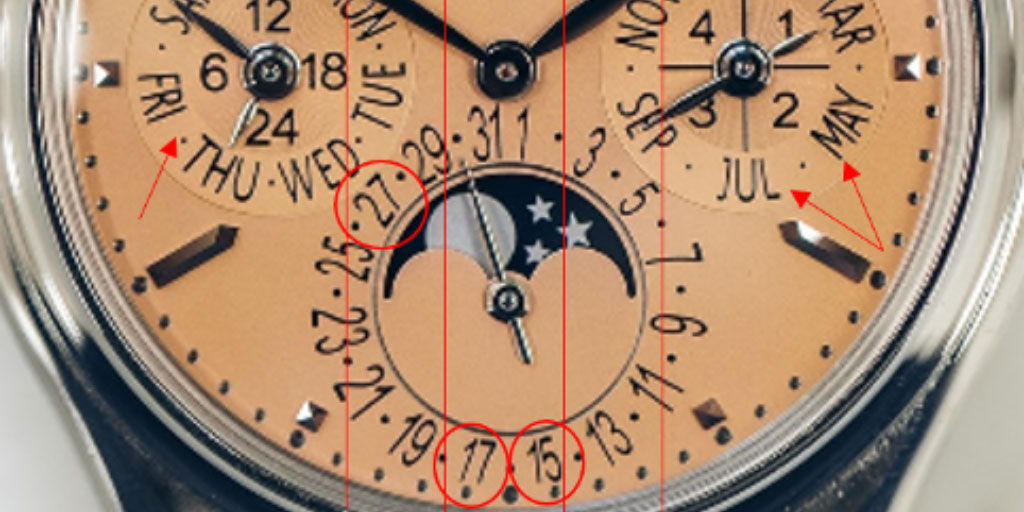
The number of these pieces produced has always been the subject of heated controversy but it is estimated that less than twenty pieces per metal were made.
THE CASE
Although the design of the case is common to the entire production of the ref. 3940, it is important to note some differences that distinguish the various production series.
THE HALLMARKS
The cases of the first and second series have the gold hallmark engravings on the opposite side of the crown. At 10 o’clock there is the engraving 750 while at 8 o’clock the Helvetia symbol. In the case of the platinum case the 950 engraving is at 10 o’clock and at 8 o’clock the Tête de chamois.
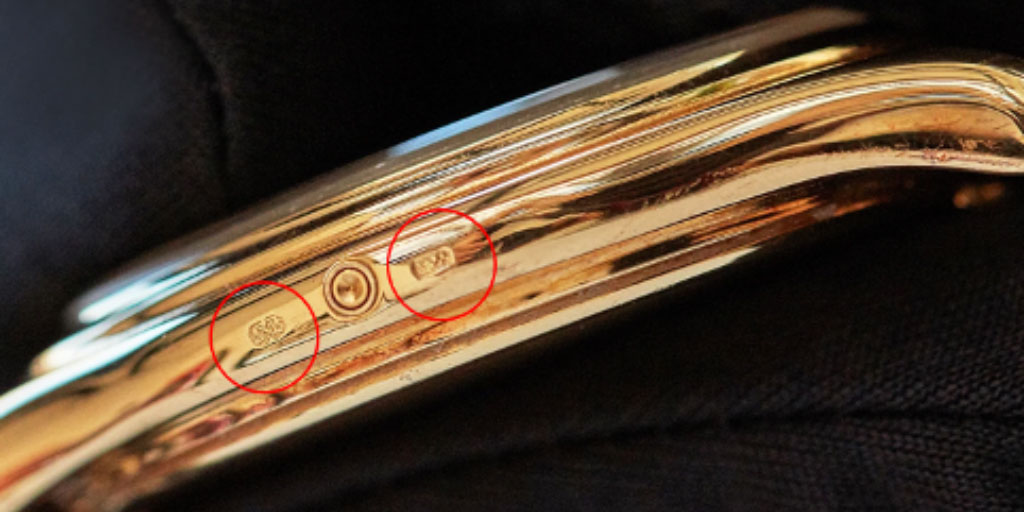
Often, when cases are polished the hallmarks can almost disappear.
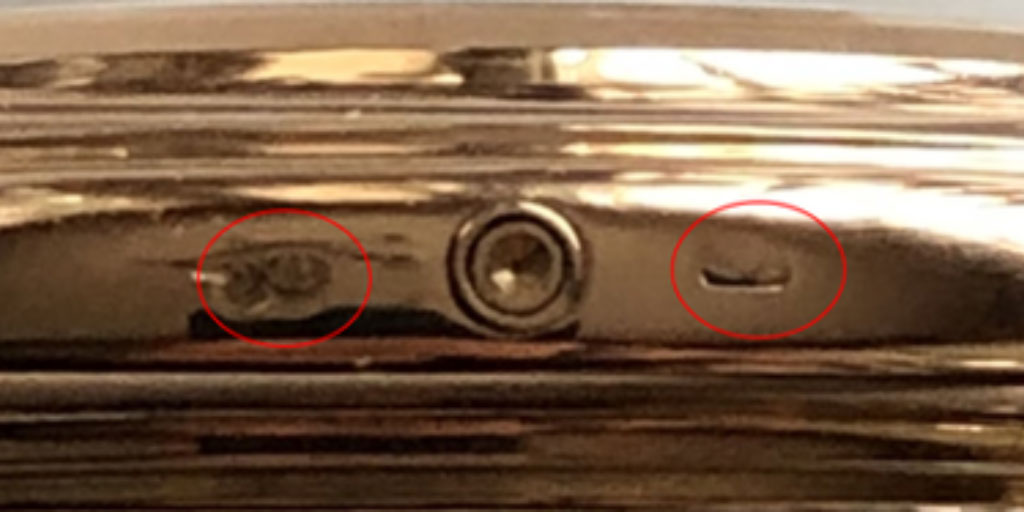
Afterwards you begin to see that during the third series the hallmarks have gone from being only on the side of the case opposite the crown, to being printed on both the side and the back of the lugs at 5 and 7 o’clock as shown below.
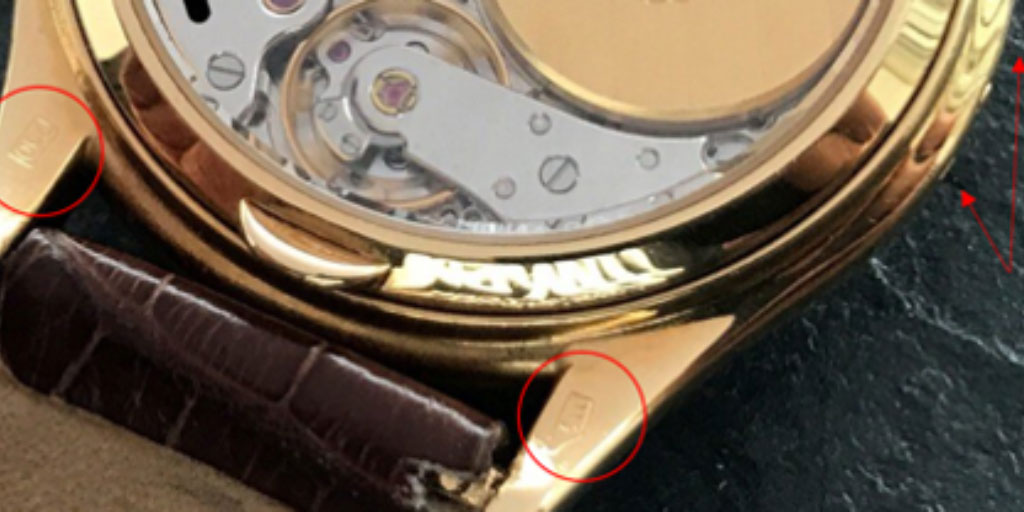
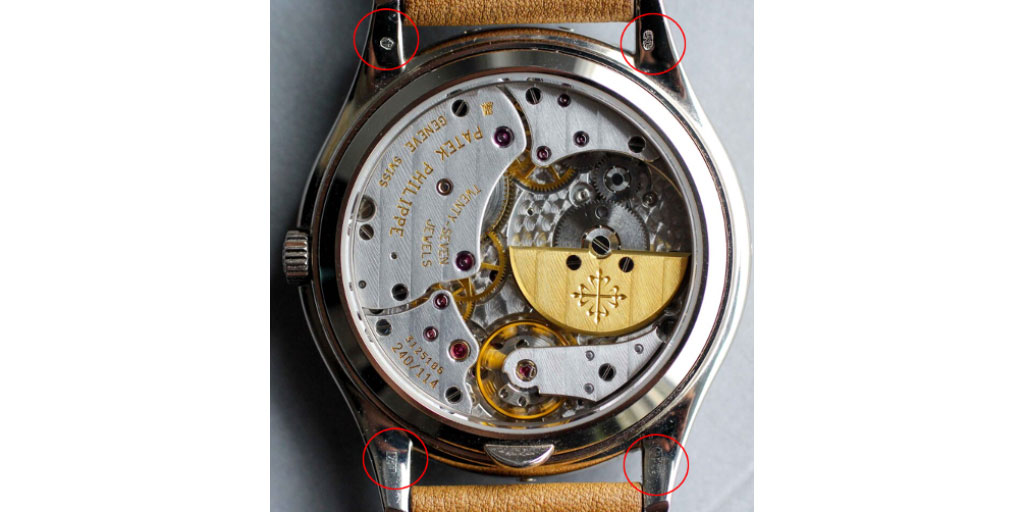
With the fourth series, the hallmarks were no longer printed on the side of the case, but can instead be found on the back of all four lugs (above).
THE CASE BACKS
At the same time as the ref. 3940, the ref. 3941 was in production, which was basically identical, but with a sapphire crystal case back. It was created due to the high number of requests that Patek Philippe was receiving from customers who wanted to admire the 240Q movement. The ref. 3941 was then discontinued when the third series began and simply merged into the ref. 3940 which began to feature the double case back. The solid gold case back is another unique feature of the first series. Until the introduction of the sapphire crystal, the beauty and craftsmanship of the movement was covered by the case back, so that only by opening it could you discover the intricate world underneath.


Starting from the second series you begin to see the sapphire crystal back below.
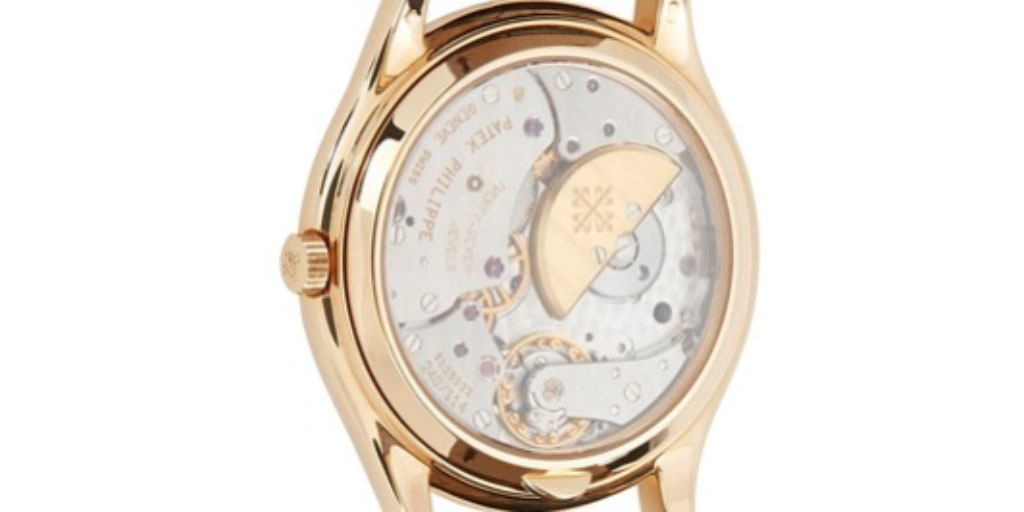
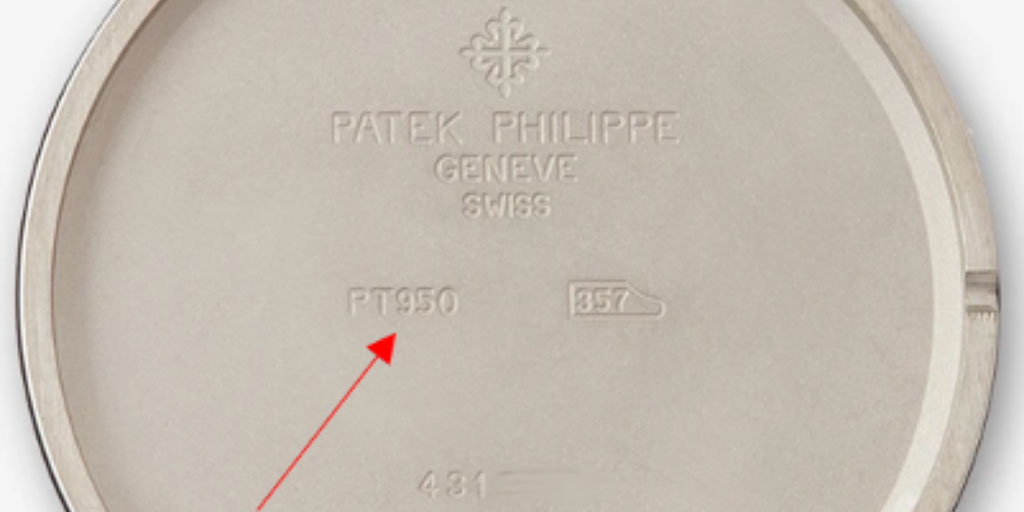
Initially, depending on their preferences, a customer could order one or the other or both case backs. At some point towards the end of the second series, it is believed that Patek Philippe began supplying both backs (usually with the display back mounted and the solid case back in the box). This option was given to customers for pieces in 18K yellow, pink or white gold, while the platinum version has always been produced with a solid case back.
BUCKLES AND BRACELETS
The ref. 3940 originally came with a pin buckle which was later replaced with a deployant buckle. It is assumed that from 1997 onwards the models were equipped with a folding clasp, although this has not been officially confirmed. It should also be noted that there are two different types of pin buckle. The first, with the traditional PP & Co and 750 engravings is more conservative in design and characteristic of the first two series as seen below.
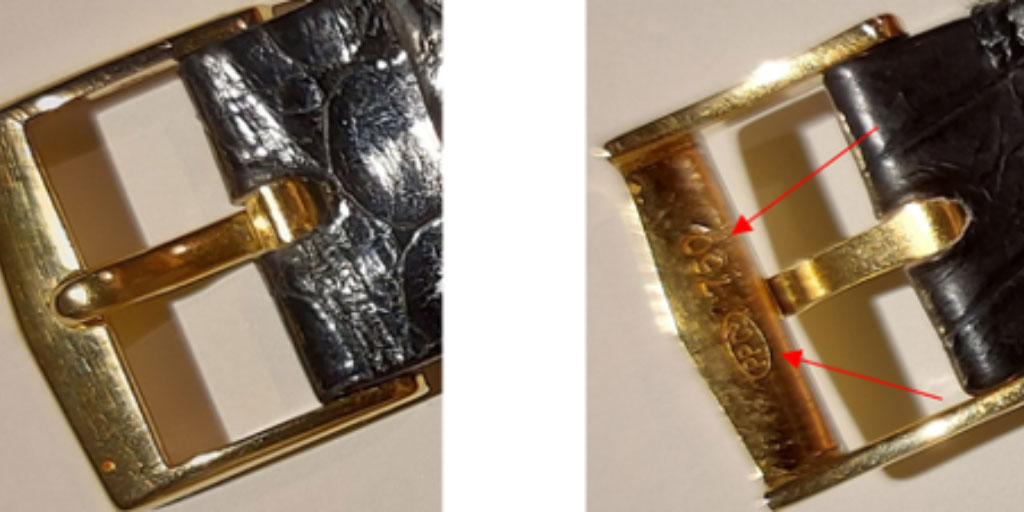
A more angular and pronounced buckle below is from the third series to the advent of the deployant buckle.

A similar evolution is also found in the deployant buckle which is configured in three variants: the first examples of the third series have an ellipse-shaped buckle, followed by an oval shape with an integrated symbol of the Calatrava cross. The last series has a rounder shape buckle, again with the Calatrava cross.
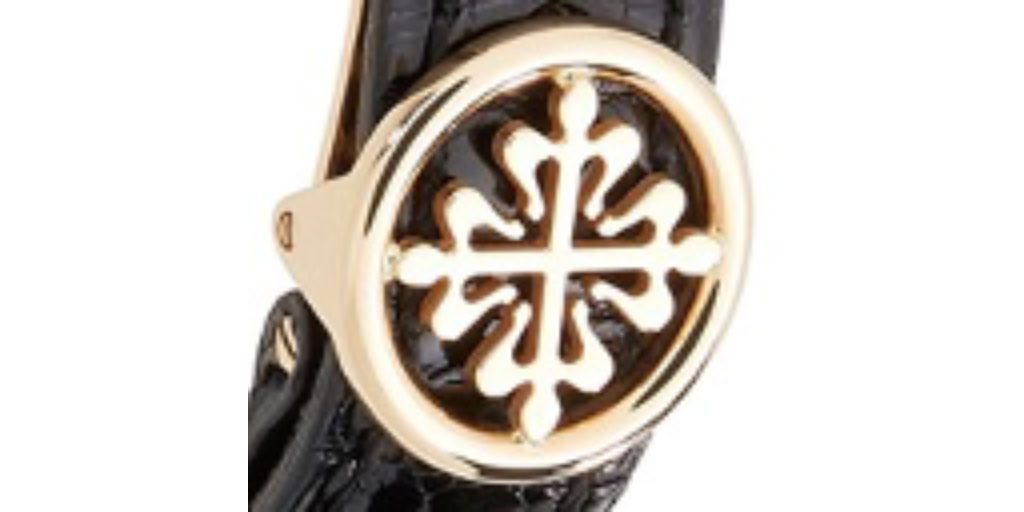
The most common buckles seen on the ref. 3940 are the three shown in the photos above. There are few pieces with removable 18K yellow or white gold bracelets. There are two variants for the yellow gold pieces. The first is a Patek Philippe bracelet with ‘grains of rice’ texture seen below.

Based on the “JPE” stamp on the buckle, these are believed to have been made by Jean-Pierre Ecoffey, a well-known manufacturer of watch bracelets and chains. More unusual is the flat link bracelet, also signed by Patek Philippe, known to have appeared on a first series in yellow gold. The example pictured below is the only one publicly known. Also accompanied by a leather strap with a pin buckle, it is assumed that it may have been a subsequent request from the customer, who ordered it directly from Patek Philippe.

Some examples in white gold have also appeared with a flat link bracelet, albeit with a slightly different design than the one pictured above.
THE CROWN
The crown is engraved with the Calatrava Cross and is always as in the example in the photo below.

THE KIT
The Patek Philippe ref. 3940 was accompanied by a wooden box and outer presentation box, by the stylus to adjust the calendar, by the Certificate of Origin and, as mentioned, starting from the second series with the double case back (full gold and sapphire crystal display first on request and then as standard with each watch).
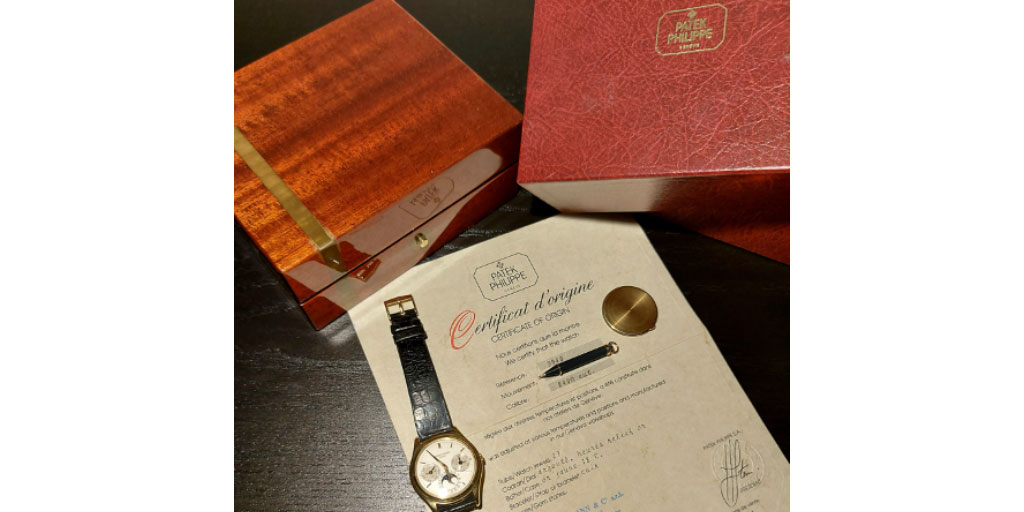
THE MOVEMENT
The main aspect of this model, which we haven’t covered yet, is the caliber 240Q. This ultra-thin automatic movement with a perpetual calendar was a triumph of Patek Philippe’s micro-engineering. The 240 movement had been in use by the manufacture for about eight years prior to the release of the ref. 3940, but it was a time-only caliber that lived within the Golden Ellipse and some ladies’s models. With a diameter of just 27.6mm and a height of 2.53mm (3.75mm for the perpetual calendar), it was one of the smallest movements on the market at the time and featured the Geneva Seal hallmark. While many argued that it was too thin to build a perpetual calendar, Mr. Stern still wanted to make it and we’re glad he did.
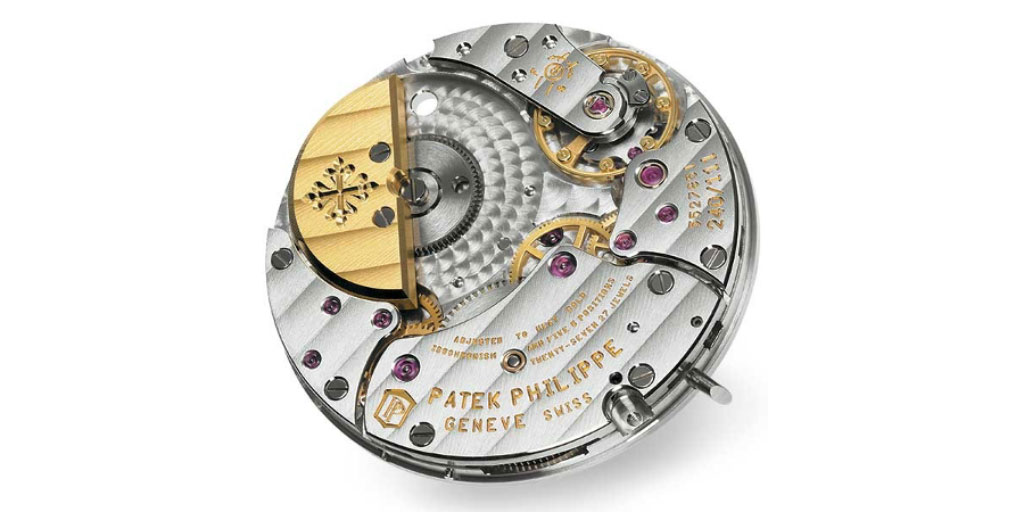
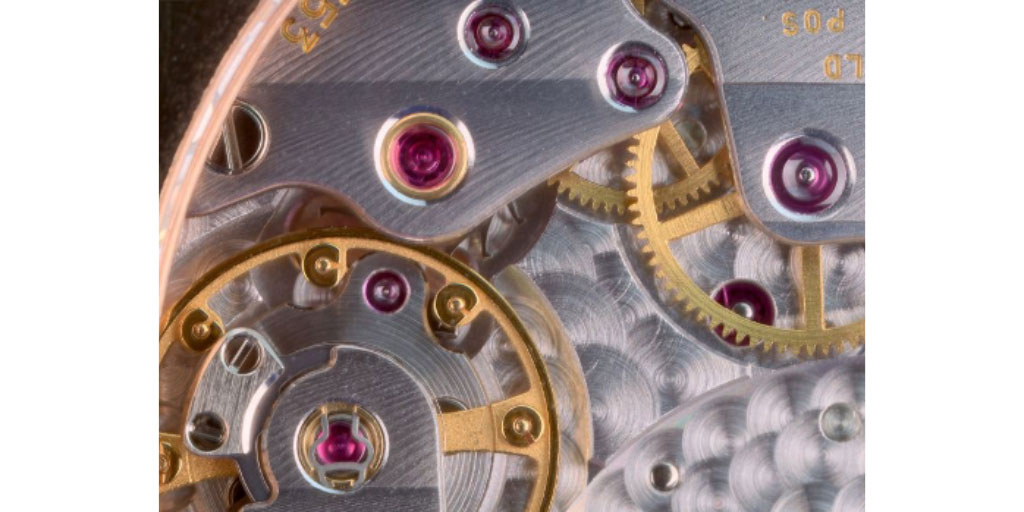


When Patek undertook the design of a new caliber, it looked for a multifunctional type that could be a base for the complicated calibers. The first challenge was to limit the thickness of the base caliber, the cal. 240. It was decided to use a micro-rotor. They already existed on the market (Buren, Piaget), but they were certainly not common. After studying various solutions, Patek used an off-center micro rotor embedded in the primary plate. Given the small diameter of the rotor, it was important to increase the momentum of inertia. This therefore needed to be made in a metal dense enough to maintain the initial momentum. A 22K rotor was found to have the perfect density and weight to maximize the efficiency of the movement winding.
To limit the charge request during operation, consumption also had to be reduced by trying to eliminate components and optimizing friction. Then a unidirectional winding was used, which made the inverters useless, which were eliminated with consequent decreases in weight and friction.
Another way in which friction has been reduced is by intervening on the gears, optimally polished and with a tooth shape optimized for interaction with the sprockets.
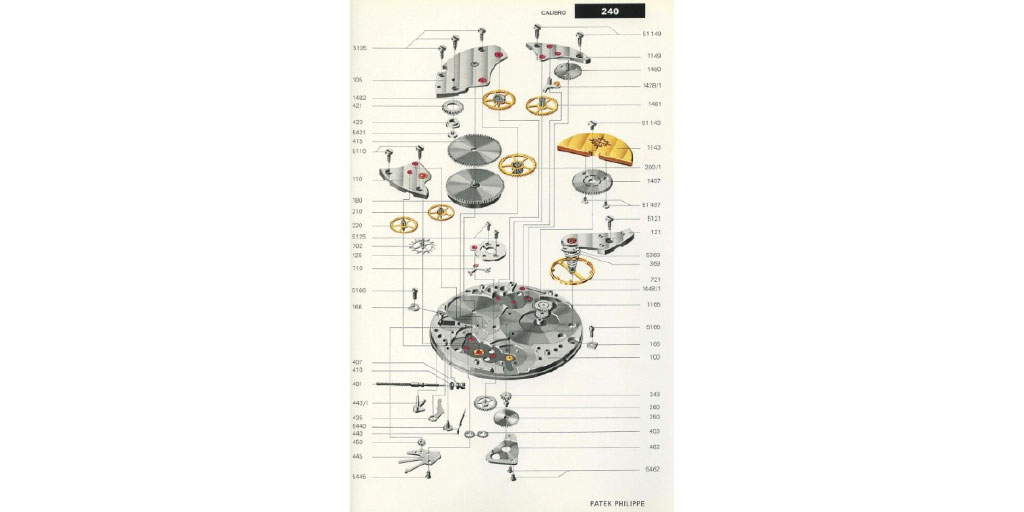
And, while everyone else scrambled to run the calibers at 28,800 VPH (4 Hz), Patek kept the caliber 240 at 21,600 VPH (3 Hz), which in turn reduces the movement’s power consumption while maintaining specs, chronometric and a power reserve of 48 hours.
At the end of all this, the Patek designers had designed their “workhorse” which was the basis of many Patek models, including the complicated ones and therefore the 240Q used in the ref. 3940.

The quality of the 240Q is indisputable. The color and shine make even the less experienced eye perceive the superfine quality that characterizes it. The recessed mini-rotor, which allows for the subtlety of the caliber is in 22K gold and every gear, wheel and pinion of the movement is perfectly finished. The Gyromax as Dr. Walt Odets writes is “singing the sweet, precise song of beautiful mechanical watch movements”. Almost all watches today tell the exact time, but very few watches tell you about craftsmanship, beauty and excellence expressed in one of the most interesting mechanisms born from the hand of man.
SOME NUMBERS
For the first series movement 240Q from 770.001 to about 770.700, it is assumed that less than a thousand pieces were produced. Second series movement 240Q from 770.701 to about 772.500, it is thought that the pieces produced are about 1800, maybe less. Third series movement 240Q is from 772.500 onwards. From here on there is no trace of the production numbers, but it is widely believed that the production numbers are higher, at least 3500 pieces. Fourth series movement 240/114 numbers are from about 3,120,000 onwards. It is estimated that the fourth and last series production numbers are greater than 4000 pieces.
Collectability thanks Federico for his scholarship and exhaustive study of the ref. 3940.

